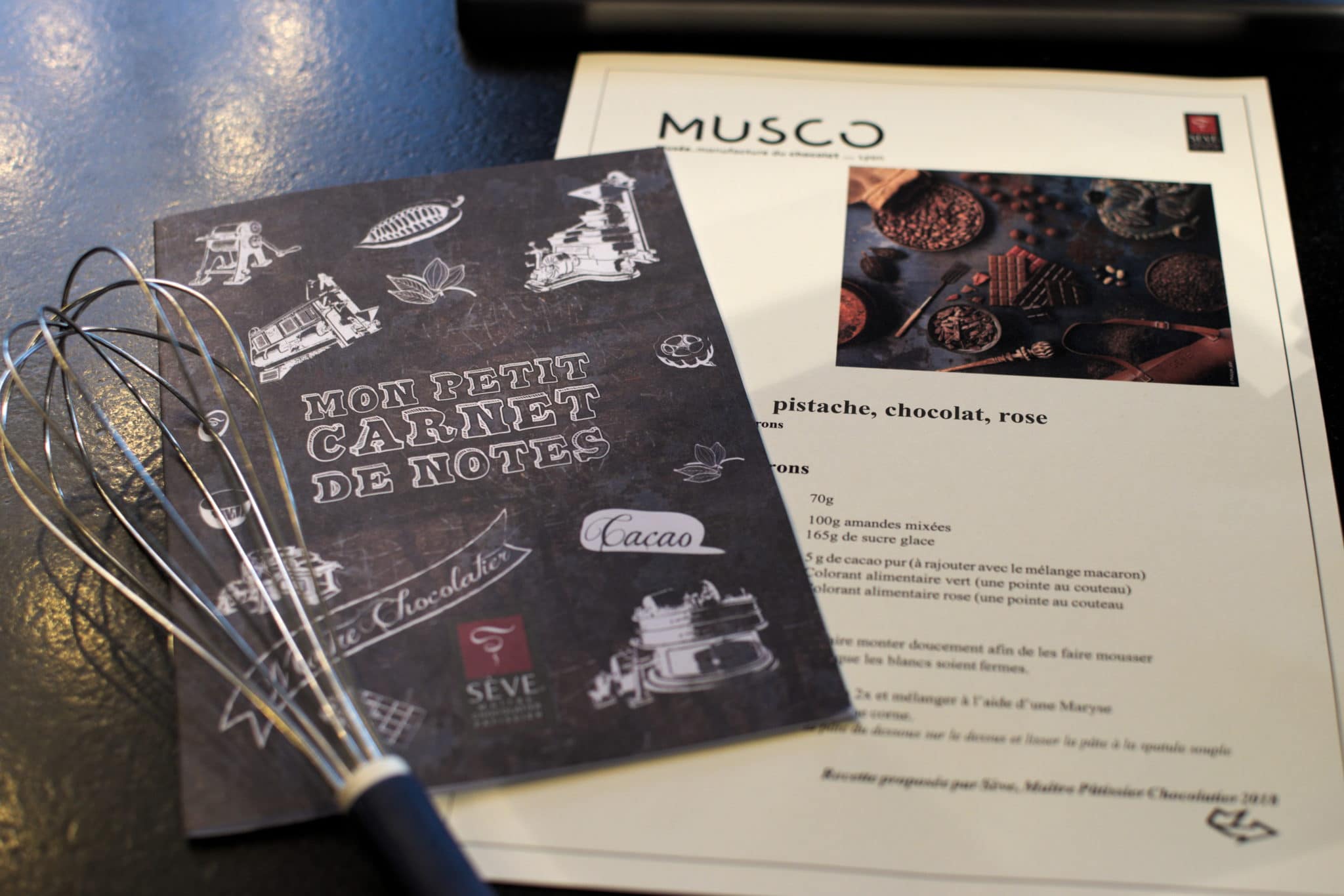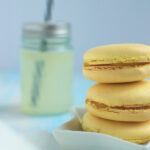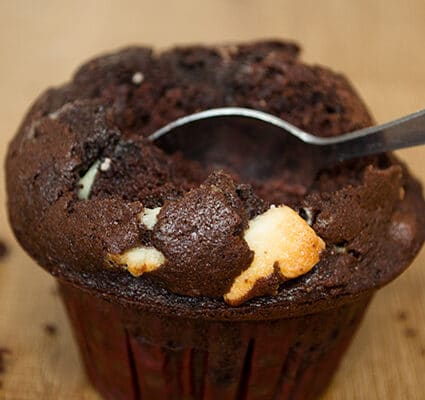As I announced in my article on lemon macaroons, I was recently invited to Lyon to the Sève chocolate factory to discover the Musco (chocolate museum) and take a macaroon masterclass. I learned a lot (it’s not every day you get to take a class with a member of Relais et Desserts!). As I’ve been given permission to publish the recipe, I’m giving you all the tips you need to make macarons just like the chef! And if you’ve been following my adventures on Instagram, I’ve finally revealed the recipe and method for making the famous ganache that has turned so many heads!
The Sève family
Before getting to the heart of the matter, I’d like to tell you a little about the Sève family. I met Richard and Gaëlle during a praline tart class at the Kenwood showroom. I was immediately taken with their kindness and the love they have for their products. They are the kind of artisans we’d like to see more of: with a work ethic that commands admiration in a world where more and more people are taking shortcuts. To ensure the quality of their chocolate, Richard and Gaëlle travel the world to source their beans, and are one of the only brands in France to offer bean-to-bar chocolate (i.e., the bean is ground on the premises to produce the chocolate as we know it). If you’re ever in Lyon, I heartily recommend a visit to the museum, which is extremely interesting.

Macaroon tips and tricks
In my last article on macaroons, I gave you a whole bunch of tips on how to make macaroons. Well, we didn’t use any of them in this masterclass! We didn’t dry the almond powder in the oven, age the egg whites or use Italian meringue. We didn’t even crust the shells!
The Sève recipe uses French meringue! In another departure from the usual macaron recipes, we didn’t use “tant pour tant” (normally we use the same weight of powdered sugar as almond powder, which isn’t the case here).
So, does it work? Yes, even without these habits, the macaroons are really good and have a beautiful ruffle, which is impressive! We made 3 macaroon recipes: chocolate, pistachio and rose. As I said in the previous article, the macaroon shells are not flavored. So it’s the fillings that provide the taste. In fact, it’s strictly forbidden to eat macaroons before they’ve matured for 24 hours: it’s the filling that makes the shells soft and fragrant!
In this recipe, we’ll have a chocolate ganache and pink and pistachio buttercreams.
Richard Sève’s recipe for macaroons
Let’s get down to business! First step: making the French meringue. For this, the chef recommends beating the egg whites very gently for almost 20 minutes. That’s quite a long time, but it allows smaller air bubbles to be incorporated. So, if some of them burst, many more remain, and the egg whites hold together better. To conclude, we set the food processor to spin gently and prepare the ganache in the meantime.

The (famous) chocolate ganache!
To be honest, when I came to this macaroon masterclass, I wasn’t expecting to get a slap in the face about how to make ganache (one of the easiest things in pastry-making!). But really, what better way to learn the basics of using chocolate than from a chocolatier?
In fact, the chef makes his ganache directly in the mixer. And believe me, that changes everything! The texture is creamy and shiny, a real treat for the palate.
To make ganache with a mixer (or food processor), simply boil the cream in the traditional way and add it to the chocolate in 3 stages. By mixing well, the chocolate will heat up and eventually melt. The texture is ideal!


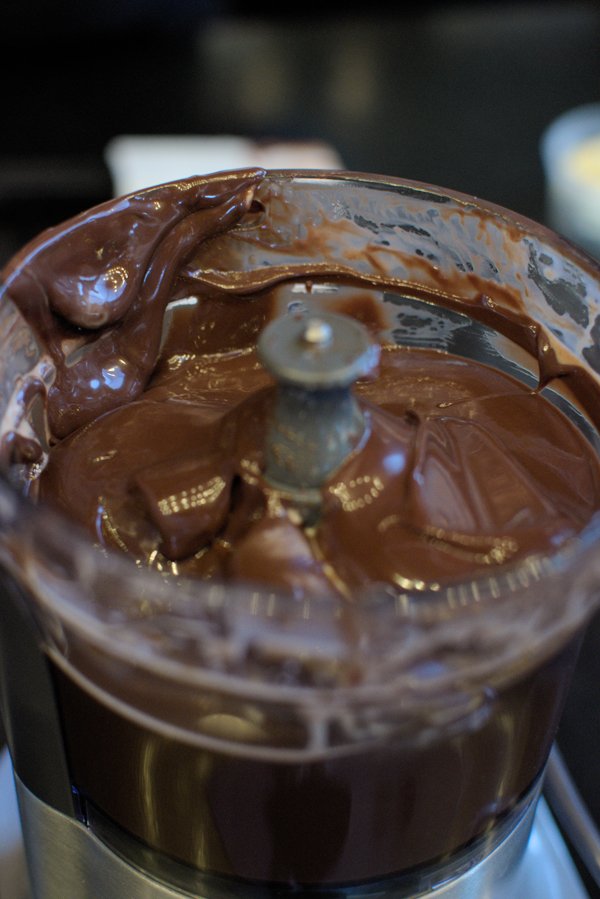
Once the chocolate has been thoroughly blended, it is left to cool to 37°C before the butter is added. Then blend again to obtain a smooth, shiny ganache. Leave to crystallize for 20-30 minutes.
Making the macaroon shells
Once the whites have set, the pink or green coloring is added (for the chocolate, the shells will be colored by the cocoa added to the sugar). The chef uses powdered coloring.

Next, we add the mixture of almond powder and sifted powdered sugar (the not-so-much icing sugar ^^). This is the cocoa mixture.

To do this, we traditionally macerate (i.e. bring the dough from the bottom to the top and smooth it with a flexible spatula) until the dough forms a ribbon. Then pipe the mixture into a pastry bag.
Poach the domes evenly on greaseproof paper with a 9 mm tip.

Chef Sève uses a template under the sulfu paper to ensure even poaching (a sine qua non for successful cooking).

The poaching of us students is a little inconsistent ^^.
Baking macaroons
This will of course depend on your oven, but the chef recommends baking at 180°C for 18 minutes. When removed from the oven, the shells should be hard (they will soften on contact with the filling).
Buttercream
While the macaroons were baking, we made a buttercream to garnish the pink and pistachio macaroons.
To do this, start by whipping the egg whites at medium speed. Next, make a syrup and heat to 121°C. To test the temperature, we tried the small ball method. You dip your fingers in cold water and grab a bit of material which you plunge back into the bowl of cold water. You should be able to form a little ball!
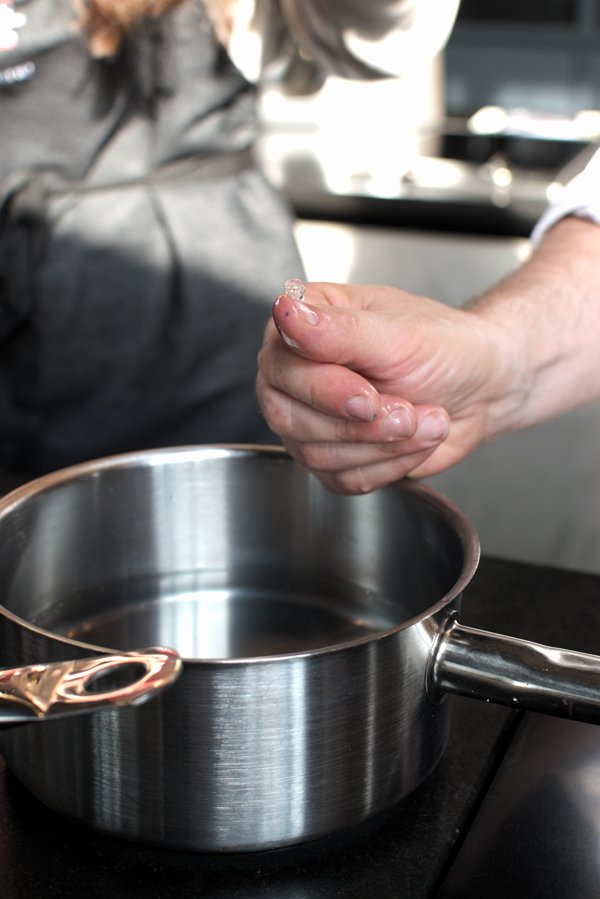
I tested it and it works! You can feel the heat a little, but nothing too dramatic! But be sure to dip your fingers in cold water before grabbing the syrup!
When the egg whites are halfway up, pour in the sugar syrup and leave the food processor running until the mixture reaches 40°. 

At this point, the butter is added in chunks until a smooth buttercream is obtained. Then pour in the rose or pistachio flavorings. Leave to cool for a while.
Museum tour
While our preparations cooled, we were treated to a private tour of the museum, with full explanations. Richard and Gaëlle were really keen to pass on their passion and bring back some beautiful pieces from their trip. I found it really interesting, and I warmly invite you to pay a visit if you’re ever in Lyon.
Macaroon filling
Once everything had cooled, we returned to the kitchen to fill our shells. I have to admit that a not inconsiderable quantity of ganache went down the drain because it’s so incredible! But we still kept enough to garnish our shells!

The tasting was a real favorite, especially for the chocolate macaroons (I didn’t like the rose so much, but I don’t like that too much in general).
I really had a great time, and I urge you to visit this museum and talk to the Maison Sève team. It’s really rare to see such passionate people! My warmest thanks to Gaëlle and Richard for their invitation and for letting me publish this recipe.
Don’t hesitate to read my article: Successful macaroons, all the tips and tricks

Macarons chocolat, pistache, pétale de rose
Ingredients
Coque macarons
- 105 g Blancs d’oeufs environ 6 blancs
- 150 g amandes mixées
- 250 g de sucre glace
- 7 g de cacao pur à rajouter avec le mélange macarons
- Colorant alimentaire vert une pointe au couteau
- Colorant alimentaire rose une pointe au couteau
Ganache au chocolat
- 80 g Crème
- 100 g Chocolat extra noir
- 25 g Beurre
Crème au beurre (pour une garniture)
- 87 g Blancs d’oeuf
- 25 g Sucre
- 175 g Beurre
- 40 g Pâte de pistache
- 4 g Sirop de rose
Instructions
Coques de macarons
- Dans la cuve du mélangeur mettre les blancs d’oeufs et faire monter doucement afin de les faire mousser puis passer en vitesse rapide, les blancs doivent être fermes. Incorporer le colorant à la fin.
- Rajouter le mélange macaron en deux fois et mélanger à l’aide d’une maryse.
- Finir de macaronner à l’aide d’une corne. (cf. macaronner = Ramener la pâte du dessous sur le dessus et lisser la pâte à la spatule souple).
- Pour les macarons à la pistache, incorporer le colorant vert
- Pour les macarons à la rose, incorporer le colorant rose
- Sur du papier sulfurisé, dresser les coques à l’aide d’une poche et d’une douille de 9mn
- Cuire à 160° pendant 18mn
- La ganache
- Dans une casserole, faire bouillir la crème. Pour réaliser l’émulsion, verser, en trois fois, la crème chaude sur le chocolat et mixer à chaque ajout. A 37°, incorporer le beurre en morceaux et mixer jusqu’à obtenir une ganache lisse et brillante.
- Laisser cristalliser (environ 20 à 30 mn).
- La crème au beurre
- Dans une casserole verser l’eau et le sucre, cuire à 121°
- Dans la cuve du mélangeur mettre les blancs d’oeuf, vitesse 4, à mi-montage incorporer le sucre et laisser tourner.
- Verser le mélange sucre et eau (à 121°) sur les blancs (vitesse 3) et laisser refroidir le mélange jusqu’à 40°. Incorporer, ensuite, le beurre en morceaux et mélanger jusqu’à l’obtention d’une crème lisse et onctueuse. Ajouter les saveurs, la pâte de pistache ou le sirop de rose.
- Montage des macarons
- Dresser les coques et pocher avec la ganache ou la crème au beurre.
- Laisser reposer au frais 3 à 4 jours.
